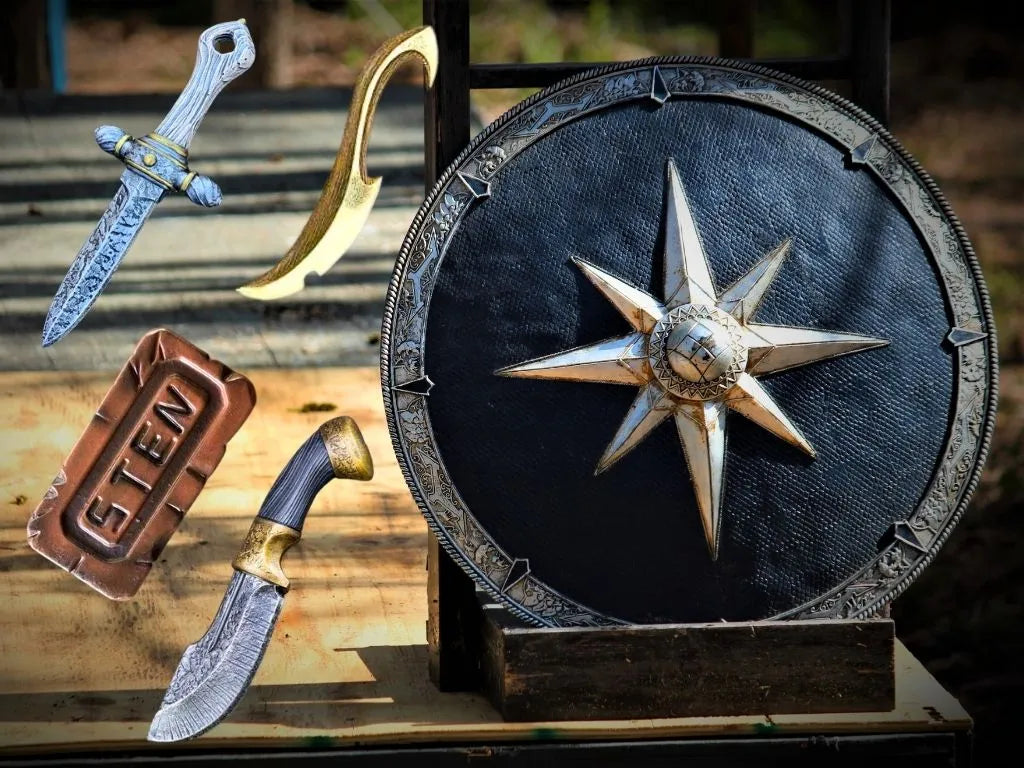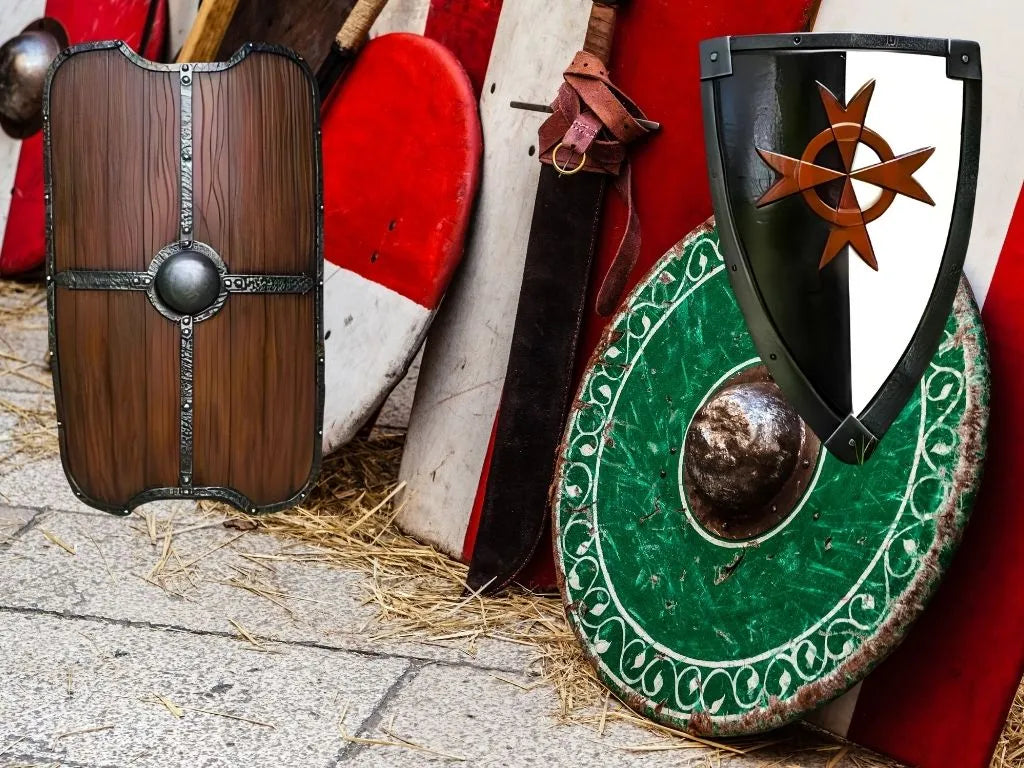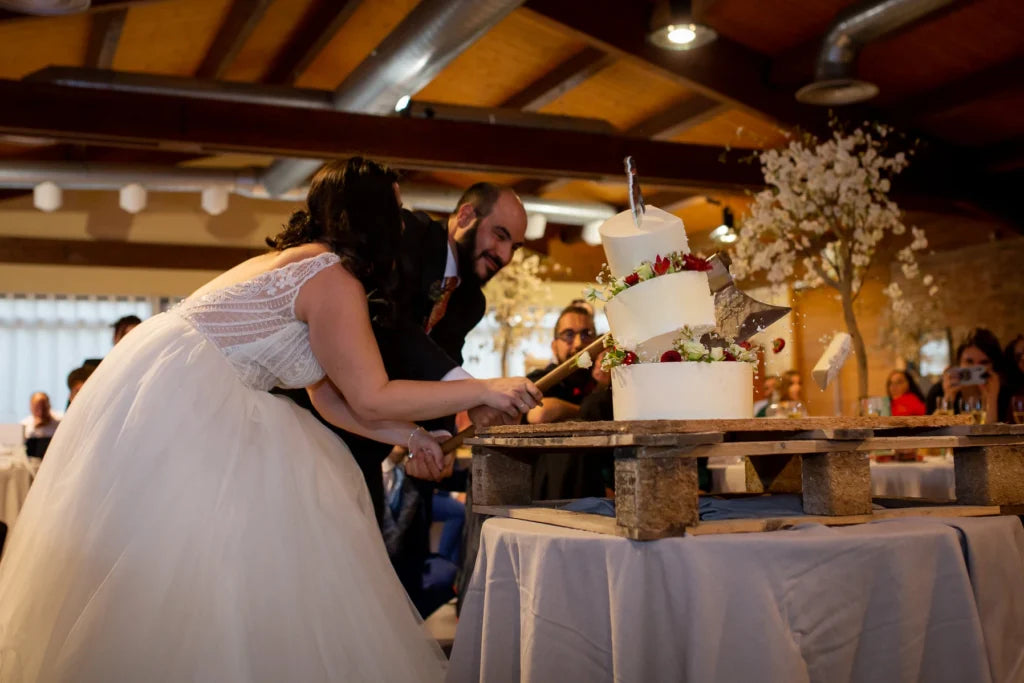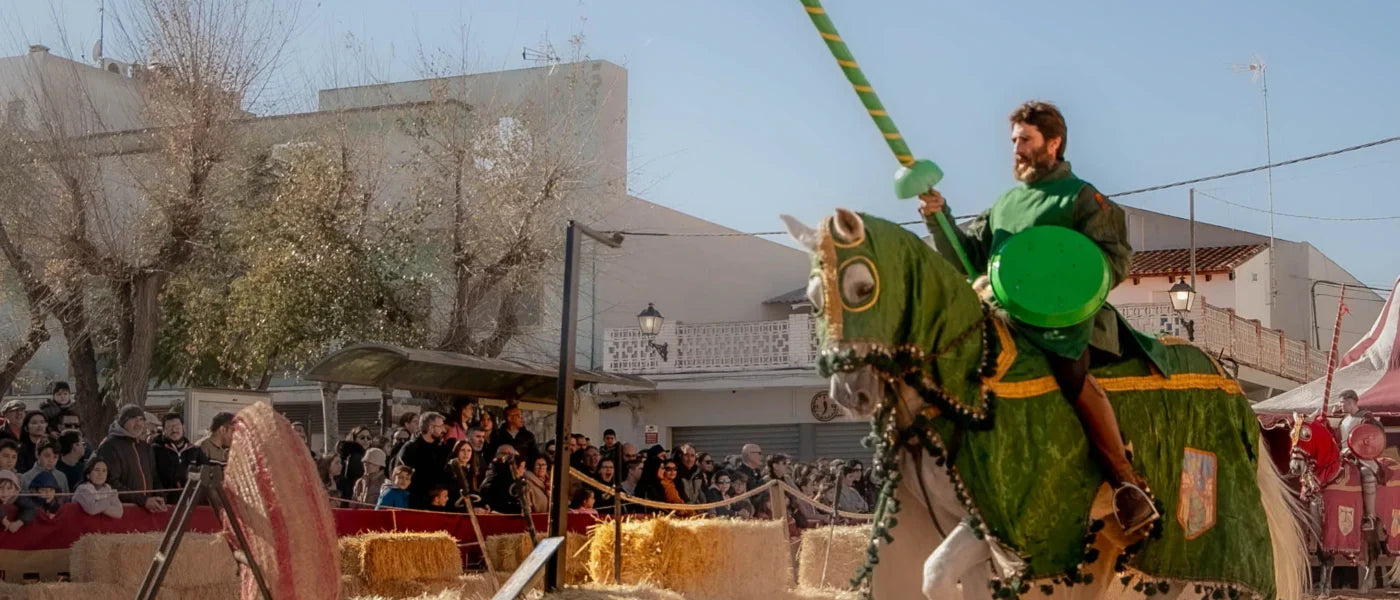
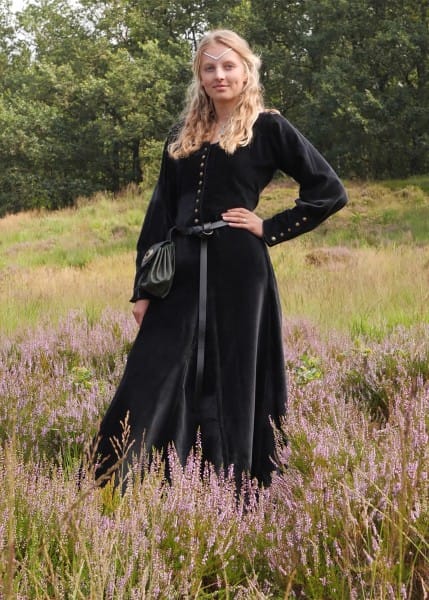

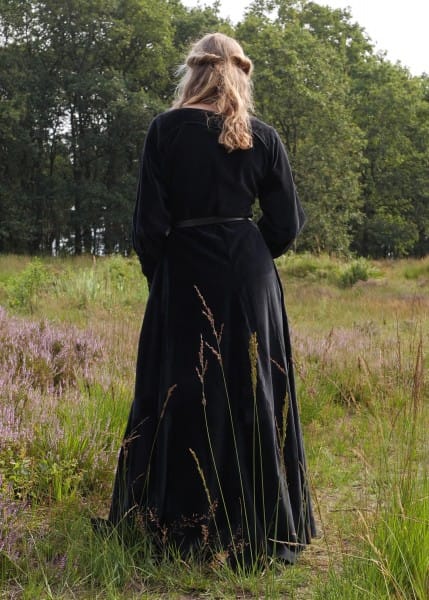







Cotehardie Isabell in velvet, medieval dress, various colours 1280022060
Choose options
This medieval velvet dress is cut close to the body and widely flared in the skirt part. The so-called geren (fabric wedges) used in the skirt part create the generous width of the dome, which makes the dress swing particularly beautifully when walking.
The sleeves are wide cut and gathered by wide cuffs. The neckline and cuffs are provided with a satin piping and the front centre is buttoned with numerous metal buttons in an anti-kmessing look. The buttons are also attached to the cuffs. The floor-length dress looks very noble due to the heavy cotton velvet and subtle details support this look.
The cut of the dress is based on medieval representations of the 17th century.
13 to 15. While the woman's tunic before this time was rather loose and concealed the body's curves, clothing was now becoming increasingly body-oriented. This body-hugging cut probably owes its name to the Cotehardie (in German cotte more or less bold), which originally originated in France from the loose Cotte.
Typical of a cotehardie are the cords or
a button placket at the centre front. Buttons first appeared at this time and eventually allowed for a close-fitting fit. The numerous buttons were placed very tightly, so that they would not pop off during the tight-fitting style of wear. The ever-widening neckline was also characteristic of these dresses and very popular with ladies in the late Middle Ages and Renaissance. Typically the cotehardia was combined with an undergarment, a veil and a narrow belt.
Depictions of a cotehardia of the period can be found in the Rosenroman, an Old French verse novel from the 13th century (original title: Le Roman de la Rose), or in the Speculum humanoe salvationis, a book of Christian edification (called Heilsspiegel) from the early 14th century.
Also the dress found on the Moy Moor, Ireland, which is classified between the 14th and 15th centuries, is cotehard and has numerous buttons.
Velvet appeared in the Mediterranean in
the 14th century and was woven mainly in Italy. The elaborate design and also the fact that this fabric was mostly made of silk made velvet garments exclusive. Velvet was very popular in Burgundian fashion and the Renaissance.
Details: - Available sizes: S, M, L, XL, XXL - Colour: green (also available: red, black) - Material: 100% cotton - Total length for size M: approx. 150 cm (measured from the highest point of the shoulder) - Care instructions: Cotton velvet should not be placed in the washing machine, as the velvet then wrinkles irrevocably.
Velvet should also not be ironed, as the pile loses its depth. We recommend brushing light stains with the clothes brush in the direction of the pile. For coarser impurities, we recommend adding the dress to the cleaning.
| Size Chart - Women - Dresses | ||||||||||||
|
How to find the right size:
To determine your dress size based on your body measurements, measure horizontally at the strongest point. For dresses, please refer to your chest circumference.
If you are between two sizes, we recommend choosing the larger size.
+5418 Reviews
HaritzEs muy divertida para jugar
AlmudenaExcelente producto, muy muy muy recomendable para los seguidores de la saga
AketzaBuen producto, tal y como esperaba. Lo recomiendo
AarónUna espada muy bonita con materiales muy buenos y un precio increíble en relación a la calidad.
AarónMuy buen producto, una calidad perfecta y se nota que está hecho a mano. Completamente recomendado
Juan Antonio100% recomendable cada detalle al milímetro
MariaTodo genial. Envío rápido y el producto de calidad
HectorRecreación increíble de una de las armas que me producen más nostalgia de mi videojuego favorito. Si te gusta Final Fantasy VIII, merece la pena, si te gustan los modelos exóticos de espadas, también.
SAULExelente regalo para fans de Kimetsu no Yaiba. Estampado de gran calidad.
SAULPlaca de madera cortada y grabada al laser con 2 imanes en la parte posterior. Perfecto para regalo.
Free shipping
The entire Iberian Peninsula from €60 (*Does not include islands) and shipping worldwide, check our rates
Customer service
We are available from Monday to Friday to answer your questions.
Secure Payment
We comply with all regulations to ensure Secure Payment
Contact us
Need to contact us? Just email us at info@espadasymas.com





